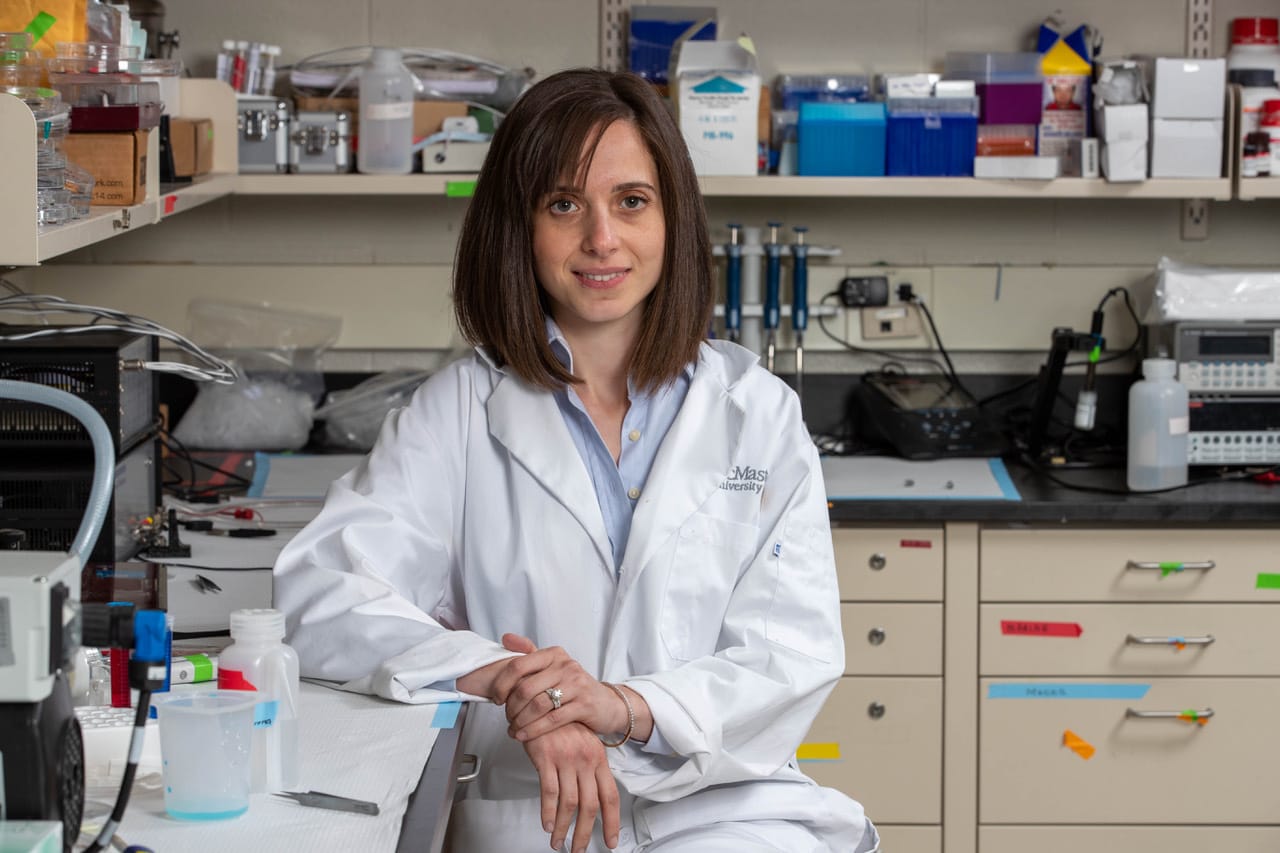If you can scare off water, you can scare off pathogens. That’s the logic behind the bacteria- and virus-shedding plastic wrap created by Leyla Soleymani, a professor of engineering physics and biomedical engineering at McMaster University, and Tohid Didhar, a mechanical and biomedical engineer there.

The inspiration for a bug-sloughing plastic comes from a bit of superhydrophobic foliage produced by nature: the lotus leaf. It sits on water but stays dry; when water comes in contact with its surface, it beads up and rolls off at the earliest opportunity. “It looks smooth, but is rough at the small scale,” said Soleymani. The plant owes its magic to nanoscopic structures that trap air bubbles — and it’s the bubbles that are ultimately responsible for the repellent nature of the leaf.
Soleymani and Didar’s film has a similar structure, with nanoscale towers to trap the air bubbles. It repels water, blood, mucus, and all the bacteria and viruses that might be contained therein. And, for extra repellency, she and her colleagues modified the film with a fluorosilane coating — a variant of the chemical used to make Teflon nonstick. The combination gave rise to a plastic film that could be applied to anything anywhere to keep it bacteria free. It also won Soleymani, Didar, and their team SAE’s Create the Future Design Contest award in 2020.
The Covid-19 pandemic was in its early bloom that year and the world was craving anything that might keep the virus at bay. “We did get some interesting funding that I think would have been difficult to get otherwise,” said Soleymani. With it she started a company with the aim of creating a commercial product, which they are calling RepelWrap.
Though the germ repellent film is not yet on the shelves, Soleymani and her team have made some major advancements. Back in 2020, they had only proved that the film repelled bacteria. Now they’ve shown that it also sheds 99.99 percent of any viral load that comes its way. And one of the viruses they tested it with was a coronavirus variant that causes a common cold. It stood no chance against the film.
They’ve also put the RepelWrap through its paces, proving, with repeated touches from human hands as well as stamps from a robot that the film is durable maintains its essential qualities after months. Though the extended use does result in a “slight deformation of the structural hierarchy,” as Soleymani puts it, it has little impact on the antimicrobial aspects of the material.
What’s more, the film’s antimicrobial properties are no longer limited to what might be called passive superhydrophobicity. By including antimicrobial nanoparticles like titanium dioxide, the researchers have made their film deadly to the microscopic villains. Now the tiny percentage of bacteria and viruses that manage to linger on a RepelWrap coated object are quickly dispatched. “If few manage to attach to the surface, they are killed by the antimicrobial effect of these nanoparticles,” said Didar.
But, aside from a few pens and other knickknacks in the lab, few things in the wider world have been swaddled in Soleymani and Didar’s film. There’s still much to be done. For one thing, the substrates go through considerable shrinking during production, which makes roll-to-roll manufacturing more complicated than it is for other films. And the material has yet to be tested with fungi. “It’s been on our to-do list for some time,” said Soleymani.
“We’re still in the process,” she said. “It turns out that scaling up, to go to large volume manufacturing — it takes longer than you think.”

2020 Grand Prize Winner
INNOVATORS: Leyla Soleymani (above) and Tohid Didhar
INNOVATION: A flexible plastic wrap that works instantly to repel a wide range of contaminants.
IMPACT: With its instant repellency and its ability to repel rather than kill or deactivate pathogens, RepelWrap presents an effective alternative to current technologies.
Learn more about the 20th Anniversary Contest at www.createthefuturecontest.com .

